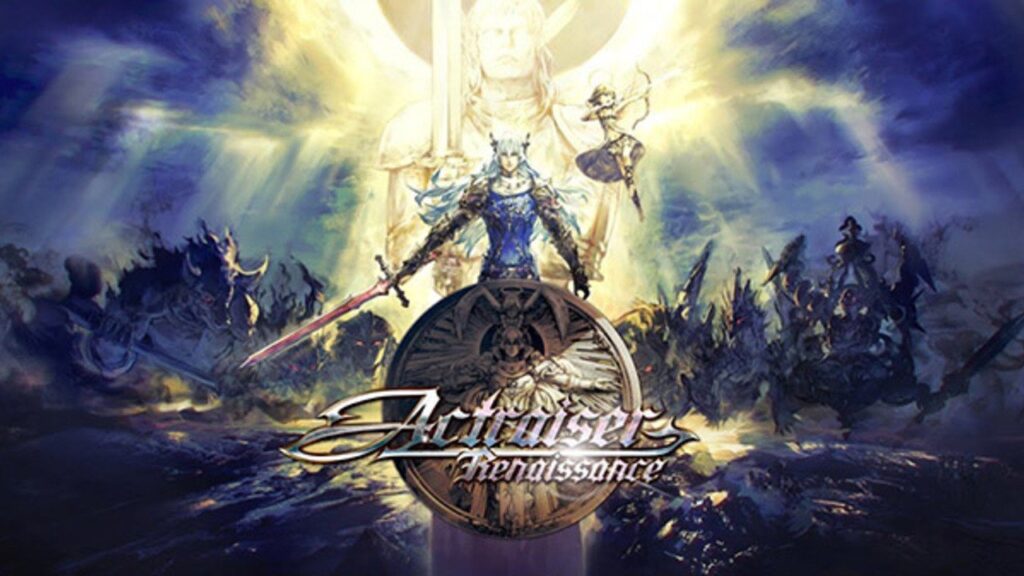
ActRaiser Renaissance is a remake of the Super Nintendo Entertainment System classic RPG, ActRaiser from 1991. The original game was notable for its blend of action-platformer and city-building simulation, as well as a heavenly soundtrack composed by Yuzo Koshiro.
Quintet may be long gone, but now in the hands of Square Enix, ActRaiser has been put in the stewardship of mobile game developer Sonic Powered. This would raise a lot of red flags, as mobile games follow a very different approach to game design that clashes with the needs of console style games.
There is a lot that could have gone wrong with ActRaiser Renaissance, and while it certainly has some flaws, it core pillars of what made the Quintet original have stood strong. Just how was ActRaiser improved? Where does the remake falter, and is this more of a dark age than a renaissance for Square Enix?
ActRaiser Renaissance
Developer: Sonic Powered
Publisher: Square Enix
Platforms: Windows PC, Nintendo Switch, PlayStation 4 (reviewed), Android, iOS
Release Date: September 23, 2021
Players: 1
Price: $29.99
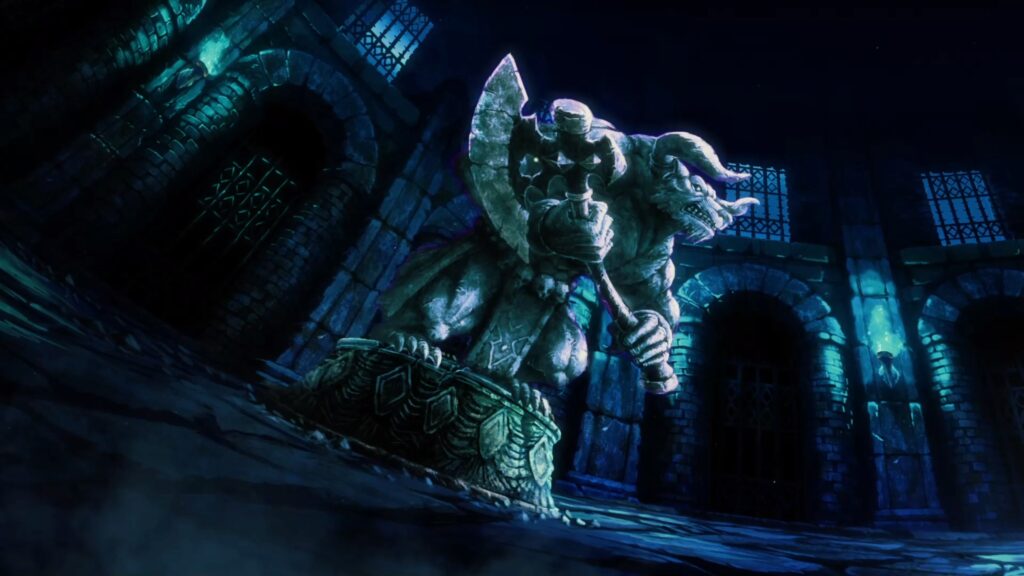
It must have taken a lot of courage for the Square Enix executives to assign an ActRaiser remake project to the developers of Air Traffic Chaos on Nintendo DS. Thankfully, this utterly insane risk payed off with mixed results that lean more positively than negative; and a lot might have to do with the fact that the foundation for ActRaiser was already strong to begin with.
ActRaiser Renaissance takes the idea of mixing genres to a new level. It wasn’t enough to just being an action-platformer with some city-building. Renaissance doubles down on this ethos, and incorporates tower-defense and some minor shoot ’em up gameplay sequences to further add variety to this RPG gumbo.
There has been so much added to this remake, it barely resembles the source material. The broad premise of God’s battle against the devil and the labor of uniting the land divided by evil machinations is still the same. The almighty still sends an avatar to physically fight and seal evil, as well as tending to the flock of believers, and taking care of them by building villages.
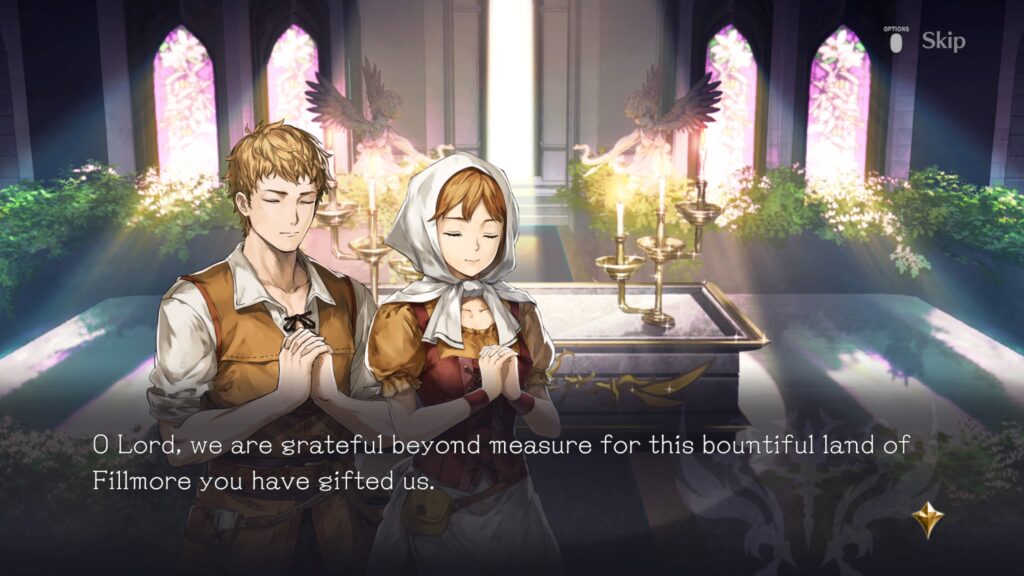
Creating order from chaos is much more involving than ever. ActRaiser used to be a pretty relaxing game during the village building.
Renaissance now inundates the player with hours upon hours of tutorials that explain endless gameplay mechanics that ruin the mood and pacing. The angel in the original game was barely a character, but now is an obnoxious twink who basically does all the talking for God; and he never shuts up.
The city building is more technical now, and terraforming the land is a major aspect of zoning. On top of this village structures will have to be upgraded, and as God the player will have to make the people happy once in a while in order to get some of that sweet and juicy hosanna. God doesn’t level up from beating up demons in human form; he’s gotta earn the praise of the people in order to manifest his power.
That is if the game will allow it, and doesn’t bore the gamer to death with the incessant interruptions. These go on for hours, and they cannot be skipped. These are the kind of tutorial pop-ups that slowly show the process for each action, so that attention deficit turtles can understand them. It’s a tremendous hump to overcome, but when its over… ActRaiser Renaissance truly begins and improves.
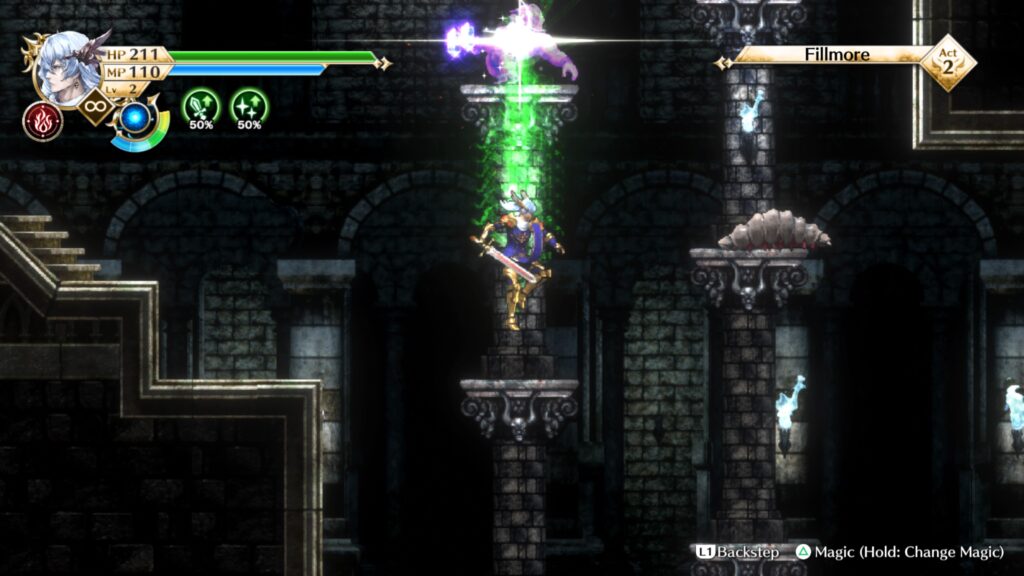
The Lord has much more at his disposal now than ever. Sending heroes to fend off invading monsters, and directing which bastilles need the resources to be upgraded into turrets for flying hellions, is a lot to manage as the devil’s minions overtake the land. These tower-defense sequences can get hairy if players don’t pay attention to their surroundings.
When in the standard village building module, gamers assume control of the Angel who functions as a cursor for God’s direction. Sometimes rouge demons show up and the gameplay becomes a light shoot ’em up where Angel can fire homing arrows to slay the evil. These moments are ActRaiser Renaissance at its most superficial, and this gameplay offers nothing of substance.
This remake is on the verge of feature bloat as is, and to have a sloppily designed shoot ’em up in it makes the experience lose focus. The frequent use of cool-down timers also show the developer’s history with mobile game design, as they are many and frequent throughout the experience.
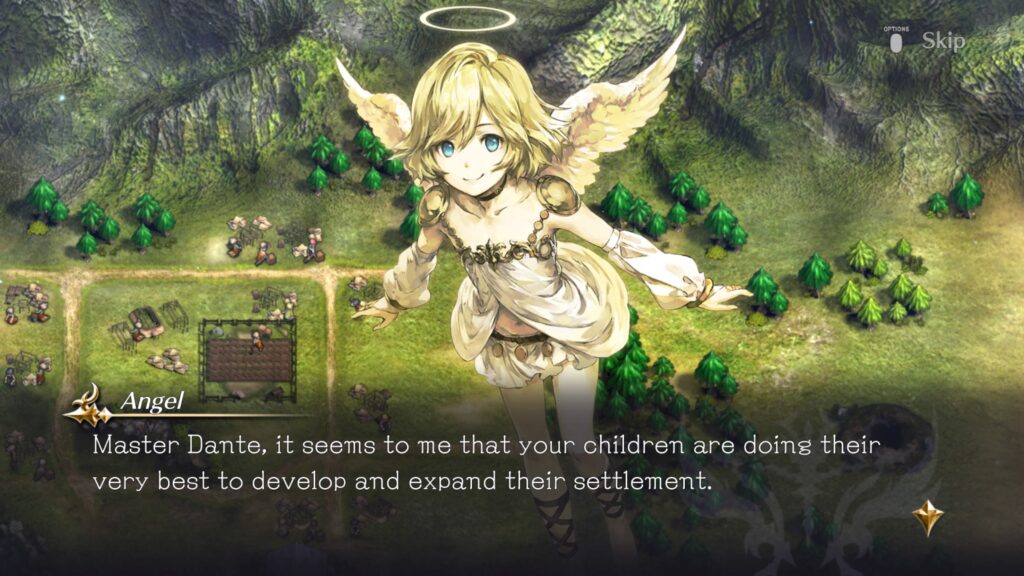
The headliner of the ActRaiser Renaissance experience is the action-platforming. This is what people come for, and it does not disappoint. The original game was a decently lengthy game that clocked in at about five hours, with about have of that being the action. Renaissance is more than 20 hours long, and more than half of it is action-platforming.
The gameplay while running though stages and hacking up false idols, demons, and evil cores feels satisfying thanks to snappy animation and visceral sound design. God’s special attacks are huge and flashy, making for a spectacle when clashing with bosses that fill the screen.
The core gameplay is simple yet still effective. God is now able to backstep like Alucard, and comes with a huge window of invincibility frames which can trivialize deadly boss attacks when timed correctly. Compounded with the backstep granting generous i-frames, it also passes through most threats, which can be very advantageous when facing Satanic foes.
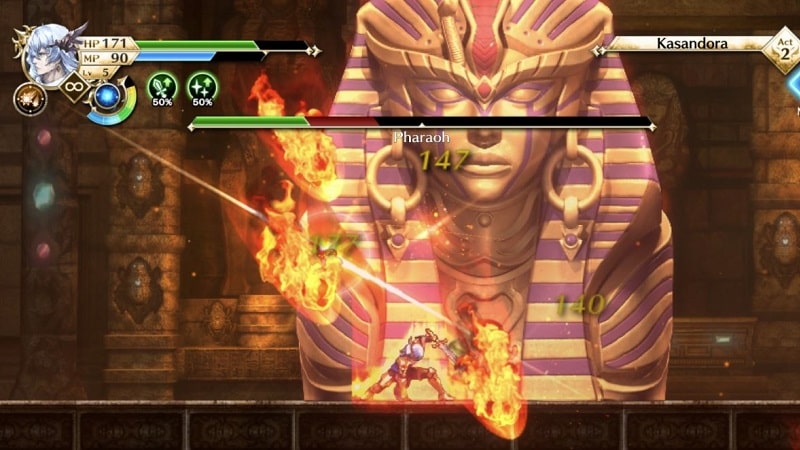
The action during these sequences feel solid overall. The platforming in the level design sometimes homage the original game. However, ActRaiser Renaissance mostly added all new areas and stage gimmicks than there was before. There is so much more to the action than in the original game, which was admittedly very simple.
Stages are huge, and are varied with different enemy types that swarm the screen when not dealt with. Bosses have different patterns, and have defined tells for devastating and hard to avoid attacks. The playability makes ActRaiser Renaissance feel like an arcade game due to the fluid and boisterous action that fills the screen.
The aesthetic of ActRaiser Renaissance is also a stark change from the 16-bit original. If you squint when playing the Super Nintendo game, it could be reasonable to confuse it with a Castlevania game. Renaissance seemingly embraces the stylish gothic visuals.
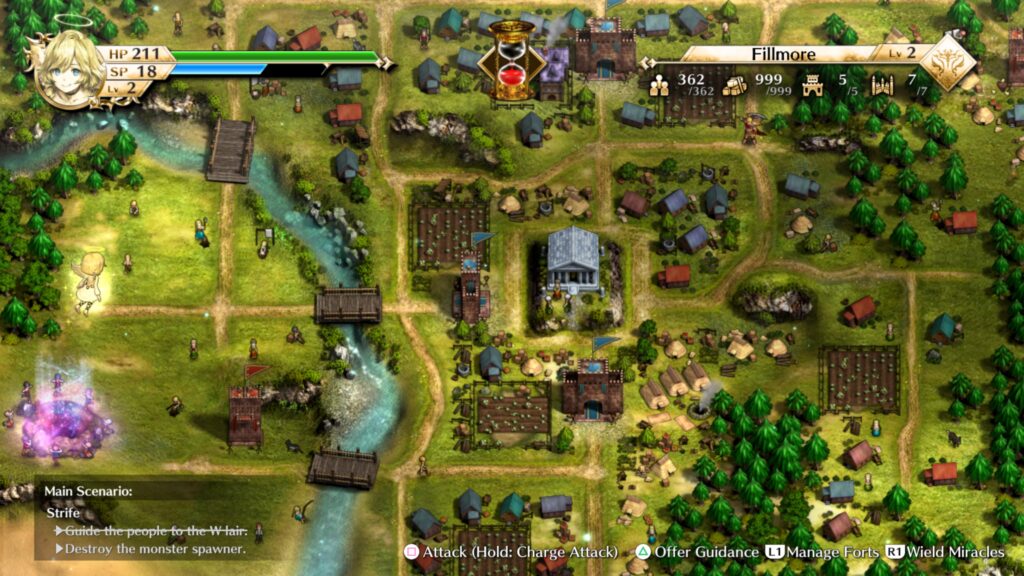
The deep color pallet and the mix of pre-rendered sprites with 3D effects make ActRaiser Renaissance resemble what ActRaiser might have looked like if it came out on the 3DO. The only complaint with the visuals and art direction is that there is barely any attempt to unify the varying styles.
Character portraits are drawn in HD, and clash with the pre-rendered elements. The HD textures on the overworld map looks like the artists were trying to capture the mode 7 effect, but with less charm due to the art being too slick. Mode 7’s fake 3D charm was effective due to it also using pixel art, and when using a high quality texture, the effect looks more cheap.
The mix of different graphic styles throughout makes ActRaiser Renaissance looks bizarre. Combining slick, clean assets and UI elements with chunky pre-rendered graphics can be an eyesore at times, but in a way has its own charm. However the mobile phone-like UI design and layout is not appealing, and only makes Renaissance look cheap.
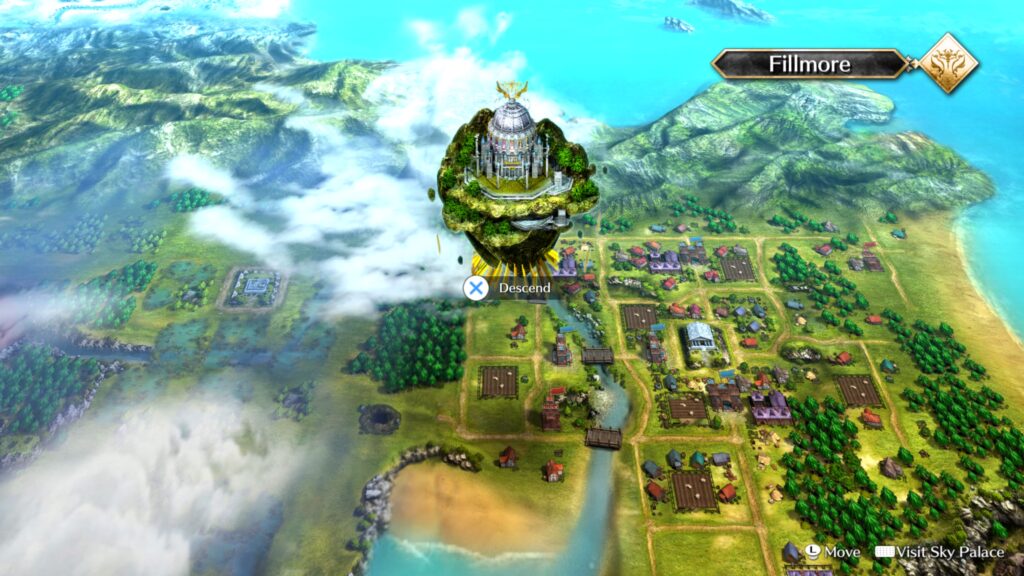
The graphics will eventually grow on the player. The human avatar form of God is very close to his design from the Super Nintendo version; right down to his signature knightly posture and sword grip. The added detail has given the artists the freedom to show his face, and that he is one handsome lad.
Of all the aspects of ActRaiser Renaissance that have been faithfully represented; by far it would be the music. Yuzo Koshiro is one of the best composers working in video games, and he is back to reimagine his work for the remake. The composition he crafts is powerful, and makes a case for games to have a music player as a standard feature.
The score is bursting with so much more energy and emotion. It used to be that players had to imagine the intent of the chiptune orchestra in ActRaiser. With ActRaiser Renaissance, he holds nothing back, while also creating all new music for the new realms in the remake’s post game content.
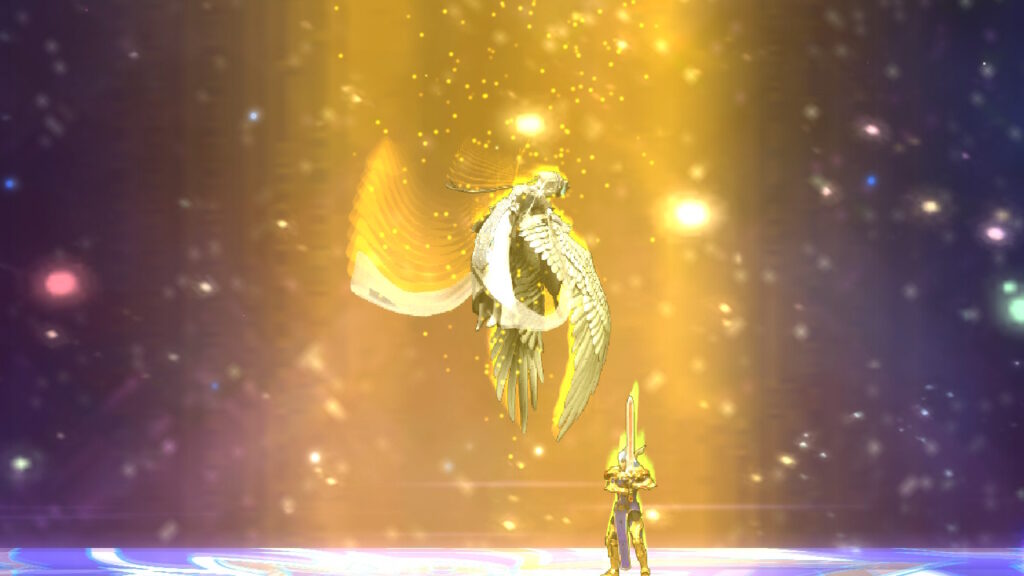
ActRaiser Renaissance is a much less focused experience from its source material, but it does have its merits. The tower-defense sequences do add to the town-building, and adds a bit of depth by having connections to platforming sequences.
The visuals are mixed bag of ideas that mostly work. The pre-rendered sprites are a bold choice that is not seen often these days, and to see them represented in this way is a welcomed surprise. The ugly mobile game UI elements are an unfortunate side effect of having a mobile developer build the game. Despite all this; it’s a miracle that ActRaiser Renaissance is as good as it is, considering Sonic Powered’s pedigree.
The 2D action was the best part of the original ActRaiser, and it’s still the best part in ActRaiser Renaissance. The other gameplay modules certainly have been greatly expanded and fleshed out to the point it changes the entire experience, and sometimes at the expense of the player’s enjoyment, due to the new systems requiring absurdly long and frequent tutorials. No matter what though, the music is pure fury.
ActRaiser Renaissance was reviewed on PlayStation 5 using a copy purchased by Nichegamer. You can find additional information about Niche Gamer’s review/ethics policy here.